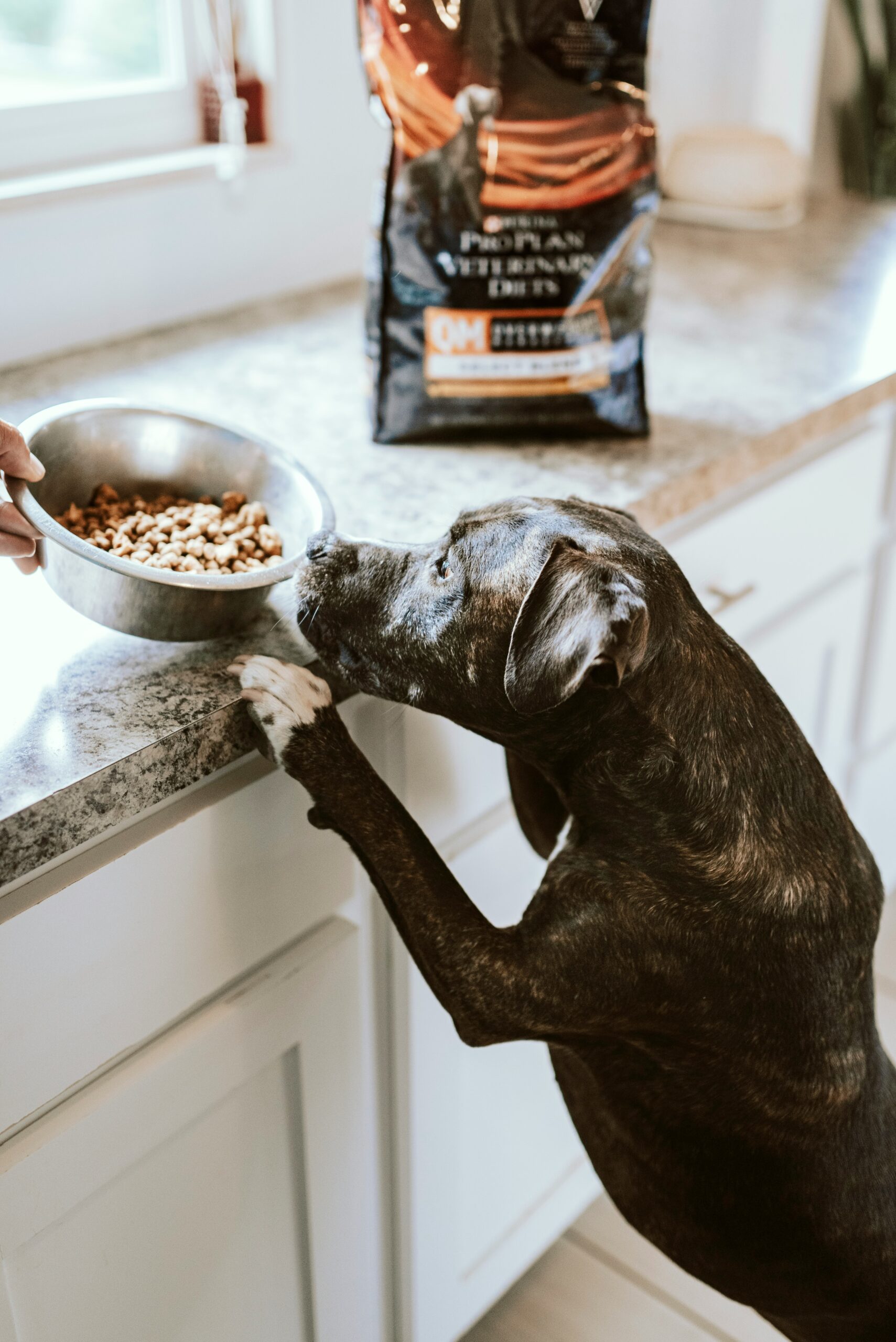Are you tired of feeding your furry friend the same bland kibble day after day? It’s time to take action! Home cooking for your dog not only elevates their dining experience but also ensures they receive essential nutrients tailored to their needs. Imagine the joy on their face when they devour a freshly prepared meal made with love. In this comprehensive guide, you’ll discover the benefits of homemade dog food, essential nutrients, and simple recipes to transform your dog’s diet. Your four-legged companion deserves the best—let’s embark on this delicious journey together!
Benefits of Homemade Dog Food
Home cooking for your dog brings an array of incredible benefits that can enhance your pet’s overall health and well-being. Here’s why you should consider it:
- Healthier Ingredients: You control what goes into your dog’s meals. This means no more hidden preservatives or fillers—just pure, nutritious ingredients.
- Customized Nutrition: Every dog is unique. With home cooking for your dog, you can tailor meals to meet your dog’s specific health needs and preferences.
- Better Digestion: Homemade meals are often easier for dogs to digest than processed foods. This can result in fewer digestive problems and firmer stools.
- Taste and Variety: Dogs love variety! Home cooking allows you to mix different ingredients, offering your pup a diverse and tasty menu that prevents boredom.
- Bonding Experience: Cooking together creates a special bond. Your dog will love the fresh, home-cooked meals, and you’ll enjoy the culinary experience.
Incorporating home cooking for your dog is a simple, rewarding way to improve their diet—making every meal an opportunity for nourishment and love.
Essential Nutrients for Dogs
When it comes to home cooking for your dog, understanding essential nutrients is crucial for their health and wellbeing. Dogs require a balanced diet to thrive, which should include the following key nutrients:
- Proteins: Vital for growth, muscle development, and energy. Sources include lean meats, fish, and eggs.
- Fats: Essential for energy and healthy skin. Include fish oil or flaxseed oil for omega-3 fatty acids.
- Carbohydrates: Provide energy and aid digestion. Opt for whole grains like brown rice or quinoa.
- Vitamins: Support various bodily functions. Incorporate leafy greens and colorful vegetables for a variety of vitamins.
- Minerals: Important for bone health and metabolic functions. Offer sources like sweet potatoes or carrots.
Quick Nutrient Breakdown:
| Nutrient | Function | Sources |
|---|---|---|
| Proteins | Muscle growth & energy | Lean meats, fish, eggs |
| Fats | Energy & skin health | Fish oil, flaxseed oil |
| Carbohydrates | Energy & digestion | Brown rice, quinoa |
| Vitamins | Bodily functions support | Leafy greens, colorful veggies |
| Minerals | Bone health & metabolism | Sweet potatoes, carrots |
Incorporating these essential nutrients in home cooking for your dog ensures they receive a well-rounded diet that promotes longevity and vitality.
Common Ingredients to Include in Dog Meals
When it comes to home cooking for your dog, choosing the right ingredients is crucial for their health and happiness. Here are key components to consider:
- Proteins: Essential for muscle development. Include:
- Chicken
- Turkey
- Beef
- Fish
- Carbohydrates: Provide energy. Opt for:
- Brown rice
- Sweet potatoes
- Pumpkin
- Fruits & Vegetables: Add vitamins and minerals. Great choices include:
- Carrots
- Peas
- Blueberries
- Apples (without seeds)
- Fats: Essential for coat health. Healthy fats can come from:
- Fish oil
- Flaxseed oil
When preparing meals, remember the importance of balance. For instance, a simple meal could consist of:
- Protein: 50%
- Carbohydrates: 25%
- Fruits and Vegetables: 25%
Ultimately, home cooking for your dog not only ensures they get the best nutrients but also provides an opportunity to experiment and cater to their taste preferences. Prioritize high-quality ingredients for a thriving canine companion!
Ingredients to Avoid in Dog Food
When embarking on home cooking for your dog, it’s crucial to understand that not all human food is safe for canine consumption. Some ingredients can pose significant health risks. Here are the key foods to avoid:
- Chocolate: Contains theobromine, which is toxic to dogs.
- Onions and Garlic: These can damage a dog’s red blood cells and lead to anemia.
- Grapes and Raisins: Even small amounts can cause kidney failure.
- Avocado: Contains persin, which can be harmful in large quantities.
- Alcohol: Toxic and can lead to severe health issues.
- Xylitol: Found in sugar-free products, it can cause insulin spikes and liver failure.
Quick Comparison of Safe vs. Unsafe Ingredients
| Safe Ingredients | Unsafe Ingredients |
|---|---|
| Lean meats (chicken, beef) | Chocolate |
| Vegetables (carrots, peas) | Onions and garlic |
| Grains (rice, oats) | Grapes and raisins |
| Fish (salmon, sardines) | Avocado |
| Eggs | Alcohol |
| Plain yogurt | Xylitol |
By consciously avoiding these harmful ingredients, you ensure that your home cooking for your dog remains nutritious and safe, promoting their overall health and well-being.
Simple Recipes for Nutritious Dog Meals
Home cooking for your dog opens up a world of flavorful, nutritious meals that your furry friend will love. Here are a few simple recipes to get you started:
Chicken and Rice Delight
- Ingredients:
- 1 cup chicken (cooked and shredded)
- 1 cup brown rice (cooked)
- 1/2 cup carrots (chopped)
- 1/2 cup peas
- Instructions:
- Combine the ingredients in a bowl.
- Mix well and serve.
Beef and Vegetable Medley
- Ingredients:
- 1 cup ground beef (cooked)
- 1/2 cup sweet potatoes (mashed)
- 1/2 cup green beans (chopped)
- 1 tablespoon olive oil
- Instructions:
- In a bowl, mix the beef with potatoes and green beans.
- Drizzle with olive oil before serving.
Fishy Feast
- Ingredients:
- 1 cup salmon (cooked and flaked)
- 1/2 cup quinoa (cooked)
- 1/2 cup spinach (steamed)
- Instructions:
- Mix all ingredients in a bowl.
- Serve warm.
Remember, home cooking for your dog not only improves their diet but also enhances the bond between you and your pet.
Supplementing Your Dog’s Diet
When you engage in home cooking for your dog, it’s crucial to ensure that their meals remain balanced and complete. Supplementing your dog’s diet can enhance their nutritional intake effectively. Here are some key points to consider:
Essential Supplements
- Omega-3 Fatty Acids: Promote skin health and reduce inflammation. Use fish oil or flaxseed oil.
- Probiotics: Support digestive health and boost the immune system. Yogurt or specific probiotic supplements can be beneficial.
- Vitamins and Minerals: Fill nutritional gaps. A daily multivitamin formulated for dogs helps cover necessary nutrients.
Foods to Consider
- Pumpkin: Rich in fiber and aids digestion.
- Sweet Potatoes: Packed with vitamins A, C, and B6, along with fiber.
Dos and Don’ts
- Do consult with a vet before introducing supplements.
- Don’t over-supplement; too much can lead to health issues.
Home cooking for your dog is an excellent opportunity to provide them with quality nutrition and supplementation tailored to their needs. Remember, consult your veterinarian for personalized advice, especially if your dog has specific dietary restrictions or health conditions.
How to Transition Your Dog to Homemade Meals
Transitioning to home cooking for your dog requires a thoughtful approach to ensure your furry friend adapts well to their new diet. Here’s how to make this change smooth and successful:
- Start Slowly: Gradually blend homemade food with your dog’s current diet over a span of 7-10 days.
- Days 1-3: 75% old food, 25% homemade.
- Days 4-6: 50% old food, 50% homemade.
- Days 7-10: 25% old food, 75% homemade.
- Day 11 Onward: 100% homemade meals.
- Monitor Reactions: Watch for any signs of digestive upset, such as diarrhea or vomiting. If issues arise, extend the transition period.
- Consistency is Key: Feed your dog at the same time each day to establish a routine. Consistency in portion sizes also helps maintain healthy eating habits.
- Adjust As Needed: Each dog is different. If your dog appears to prefer one recipe over another, don’t hesitate to make adjustments that suit their taste.
Incorporating home cooking for your dog doesn’t have to be overwhelming. Make this transition a positive experience, filled with love and nutritious choices!
How to Transition Your Dog to Homemade Meals
Transitioning your dog to homemade meals is crucial for their digestive health and overall well-being. Follow these effective steps to ensure a smooth shift to home cooking for your dog:
- Gradual Introduction:
- Start by mixing 25% homemade food with 75% of your dog’s regular food for the first few days.
- Gradually increase the homemade portion every few days until you reach 100%.
- Monitor Their Tolerance:
- Observe your dog for any signs of discomfort, such as diarrhea or vomiting.
- If you notice any adverse reactions, slow down the transition.
- Maintain Variety:
- Introduce different recipes to avoid monotony and ensure a balanced diet.
- Rotate ingredients like lean meats, vegetables, and grains to provide a range of nutrients.
- Consistency is Key:
- Stick to a regular feeding schedule to help your dog adapt to this new routine in home cooking for your dog.
- Keep It Simple:
- Start with easy-to-digest recipes. This helps your dog to accept homemade meals comfortably.
Following these tips will facilitate a seamless transition, helping your furry friend embrace the exciting world of home cooking for your dog!
Consulting with a Veterinarian on Diet Changes
When it comes to home cooking for your dog, seeking professional advice is vital. A veterinarian provides insights that ensure your dog’s specific dietary needs are met. Here’s why consulting with your vet is crucial:
- Tailored Nutrition: Every dog is unique. Your vet can tailor dietary recommendations based on your dog’s breed, age, weight, and health conditions.
- Address Health Issues: If your dog has allergies, chronic illnesses, or specific nutritional deficiencies, your vet can guide you in choosing the right ingredients for home cooking for your dog.
- Portion Control: Proper portion sizes help maintain a healthy weight. Your vet will assist you in determining the correct amounts for your dog’s meals.
- Regular Check-ups: Routine vet visits ensure you stay on track with your dog’s nutrition plan. They can help adjust the diet as needed based on your dog’s health.
In summary, always consult your vet before making significant dietary changes. This step ensures that your transition to home cooking for your dog is not only safe but also beneficial for their overall health and wellbeing.
Consulting with a Veterinarian on Diet Changes
When it comes to home cooking for your dog, consulting with a veterinarian is non-negotiable. Your dog’s health hinges on balanced nutrition, which a vet can help ensure. Here’s why you must consult your vet before making significant dietary changes:
- Personalized Guidance: Every dog has unique nutritional needs. A veterinarian will assess your dog’s age, breed, weight, and activity level, recommending tailored food choices.
- Health Monitoring: Prioritize your dog’s health by identifying any pre-existing conditions. A vet can detect any dietary restrictions or allergies your dog may have, steering you away from harmful ingredients.
- Nutritional Balance: Home cooking for your dog can lead to unintentional imbalances. Your vet can provide insights on essential nutrients you might miss, ensuring your homemade meals are complete and balanced.
- Proper Transition: Changing your dog’s diet can lead to digestive upset if done improperly. A veterinarian can help you create a gradual transition plan, minimizing risks and optimizing acceptance of the new food.
Don’t overlook this crucial step—consultation empowers you to provide the best nutrition for your furry friend!



